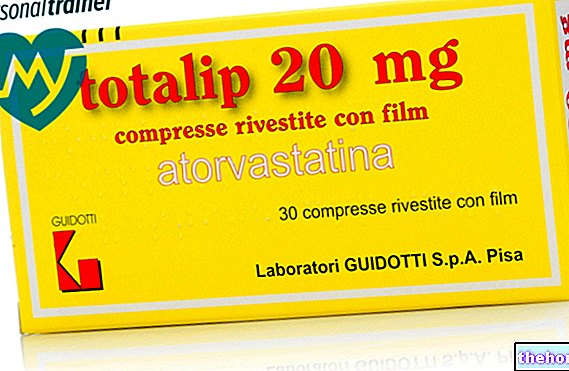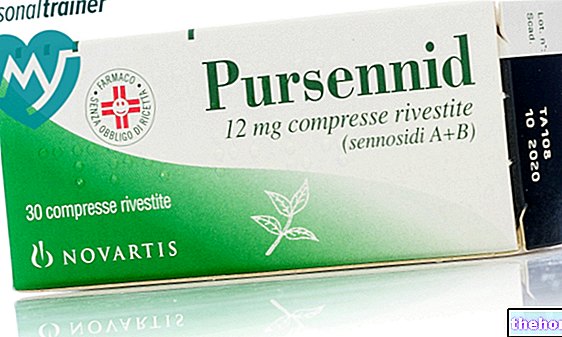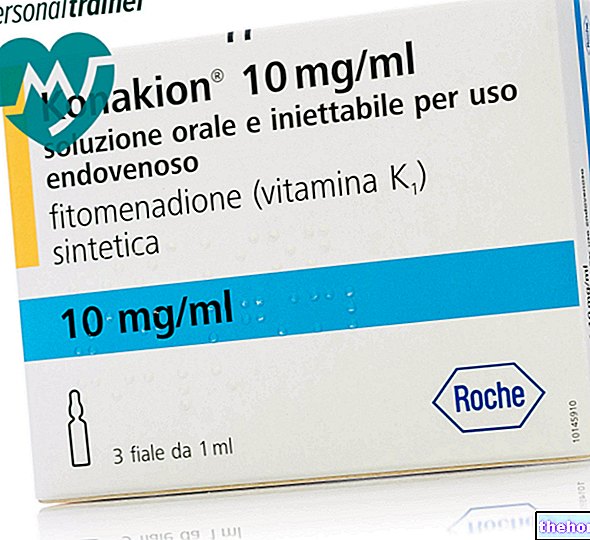Active ingredients: Macrogol (Macrogol 4000)
PERGIDAL 7.3 g powder for oral solution
Why is Pergidal used? What is it for?
PHARMACOTHERAPEUTIC CATEGORY
Pergidal is a laxative with osmotic action (facilitates evacuation by drawing water into the intestinal lumen).
THERAPEUTIC INDICATIONS
Treatment of constipation in adults, the elderly and children aged> 12 years (adolescents).
Contraindications When Pergidal should not be used
- Hypersensitivity to the active substance macrogol (polyethylene glycol) or to any of the excipients
- Laxatives should not be used by subjects with acute abdominal pain or of unknown origin, nausea or vomiting, marked accentuation or reduction of peristalsis (intestinal motility), rectal bleeding.
The presence of one or more of these symptoms or signs requires an adequate diagnostic investigation by the Doctor in order to exclude one of the pathological conditions that contraindicate the use of laxatives, for example:
- severe inflammatory bowel disease (such as ulcerative colitis, Crohn's disease) toxic omegacolon, associated with symptomatic stenosis
- perforation or risk of intestinal perforation,
- paralytic ileus, or suspected bowel obstruction,
- severe state of dehydration.
Precautions for use What you need to know before you take Pergidal
The treatment of chronic or recurrent constipation always requires the intervention of the physician for the diagnosis, prescription of drugs and surveillance during the course of therapy.
Consult your doctor when the need for the laxative derives from a sudden change in previous bowel habits (frequency and characteristics of bowel movements) that has lasted for more than two weeks or when the use of the laxative fails to produce effects.
It is also advisable for elderly people or those in poor health to consult their doctor before using a laxative.
Very rare cases of hypersensitivity reactions (skin rash, urticaria, edema) and exceptionally anaphylactic shock have been reported with medicinal products containing macrogol (polyethylene glycol).
Pergidal does not contain significant amounts of sugars or polyols and can be prescribed in diabetic patients or in patients on a galactose-free diet.
Interactions Which drugs or foods can modify the effect of Pergidal
Tell your doctor or pharmacist if you have recently taken any medicines, even those without a prescription.
Laxatives can reduce the time spent in the intestine, and therefore the absorption of other drugs administered simultaneously orally.
Therefore, avoid ingesting laxatives and other drugs at the same time: after taking a medicine, leave an interval of at least 2 hours before taking the laxative.
The use of licorice increases the risk of hypokalemia.
Warnings It is important to know that:
The abuse of laxatives (frequent or prolonged use or with excessive doses) can cause persistent diarrhea with consequent loss of water, mineral salts (especially potassium) and other essential nutritional factors.
In severe cases, the onset of dehydration or hypokalaemia (decrease in potassium in the blood) is possible, which can cause cardiac or neuromuscular dysfunction, especially in the case of simultaneous treatment with cardiac glycosides, diuretics or corticosteroids.
The abuse of laxatives, especially contact laxatives (stimulant laxatives), can cause addiction (and, therefore, the possible need to gradually increase the dosage), chronic constipation and loss of normal intestinal functions (intestinal atony).
Sunset yellow FCF (E 110) can cause allergic reactions.
The treatment of constipation with any medicine is only a support to a healthy lifestyle and a correct diet, for example: a diet rich in fluids and fibers, an "appropriate physical activity and the restoration of intestinal reflexes.
In case of diarrhea, electrolyte monitoring should be considered in patients with a predisposition to water-salt balance disorders (for example: elderly subjects, patients with impaired hepatic or renal function or patients taking diuretics).
In pediatrics, an organic disorder must be ruled out before starting treatment. A full clinical review should be conducted after 3 months of treatment.
This medicine must not be taken by patients with hereditary problems of fructose intolerance.
The presence of sulfur dioxide can cause, although rarely, hypersensitivity reactions and bronchospasm.
Pregnancy and breastfeeding
Ask your doctor or pharmacist for advice before taking any medicine.
There are no adequate and well-controlled studies on the use of the drug in pregnancy or lactation. Therefore, the medicine should only be used in case of need, under the direct supervision of the doctor, after evaluating the expected benefit to the mother in relation to the possible risk to the fetus or infant.
Consult your doctor if you suspect pregnancy or wish to plan a maternity leave.
Effects on ability to drive and use machines
No studies on the ability to drive and use machines have been performed
NOTES ON HEALTH EDUCATION
First of all it must be borne in mind that, in most cases, a balanced diet rich in water and fiber (bran, vegetables and fruit) can permanently solve the problem of constipation.
Many people think they suffer from constipation if they fail to evacuate every day.
This is a mistaken belief as this situation is completely normal for a large number of individuals.
Consider, instead, that constipation occurs when the bowel movements are reduced compared to one's personal habits and are associated with the emission of hard stools.
If episodes of constipation occur repeatedly, a doctor should be consulted.
Dose, Method and Time of Administration How to use Pergidal: Posology
Adults, the elderly and children over 12 years of age (adolescents)
1-3 sachets per day.
The correct dose is the minimum sufficient to produce easy evacuation of soft stools.
It is advisable to initially use the minimum doses provided.
When necessary, the dose can then be increased, but without ever exceeding the maximum indicated.
In children, treatment should not exceed three months given the absence of clinical data for treatment longer than 3 months.
Take away from meals in the morning in the case of taking one sachet per day or in the morning and evening in the case of taking several sachets per day.
Dissolve the powder, just before its use, in about 250 ml of water (more or less the content of two glasses or a cup).
Do not add any other ingredients.
It is preferable to drink the entire amount fairly quickly (within a few minutes) and avoid sipping it for a long time.
The effect may occur within 24-48 hours of administration.
The recovery of the bowel movements induced by the treatment can be maintained by a healthy lifestyle and a correct diet. A diet rich in liquids promotes the effect of the medicine.
On the basis of the response obtained in the individual patient, the daily dose will have to be adjusted by the Doctor (within the "authorized posology") and the duration and modality of suspension of the treatment will have to be established.
Overdose What to do if you have taken too much Pergidal
Excessive doses can cause abdominal pain and diarrhea which disappear with dose reduction or discontinuation of treatment.
Excessive loss of fluids and electrolytes caused by diarrhea or vomiting may require correction of any changes. See also the information in the "Special warnings" section regarding laxative abuse.
Cases of pulmonary aspiration have been reported when high volumes of polyethylene glycol and electrolytes have been administered through the nasogastric tube. Neurologically impaired children with oromotor dysfunction are particularly at risk of aspiration.
Cases of perianal inflammation and soreness have been reported in pediatrics when large volumes of macrogol solution (4 to 11 liters) have been administered for intestinal lavage either in preparation for colonoscopy or for fecal unblocking in case of encopresis.
In case of accidental ingestion / intake of an excessive dose of Pergidal it is recommended to notify your doctor immediately or contact the nearest hospital.
Side Effects What are the side effects of Pergidal
Like all medicines, Pergidal can cause side effects, although not everybody gets them.
Undesirable effects listed by frequency are reported, using the following convention: Very common (≥1 / 10); common (≥1 / 100 to
The undesirable effects listed in the table below have been reported in clinical trials (600 adult patients) and in post marketing use. Generally undesirable effects were transient and of mild intensity, mainly related to the gastrointestinal tract:
- Abdominal pain and / or abdominal distension
- Diarrhea
- Nausea
- He retched
- Urgency to defecate
- FAECAL INCONTINENCE
- Anal irritation
- Severe diarrhea
- Hypersensitivity reactions. They can manifest as: itching, rash, hives or edema (swelling, especially in the face or hands; swelling or itching of the lips or throat, Quincke's edema, difficulty breathing, anaphylactic shock)
- Disorders of electrolyte balance (hyponatremia, hypokalaemia) and / or dehydration, especially in elderly patients
Pediatric population:
The undesirable effects listed in the table below have been reported in clinical trials (147 children aged 6 months to 15 years) and in post marketing use. As in adult patients, undesirable effects were transient and of mild intensity mainly related to "gastrointestinal system:
- Abdominal pain
- Diarrhea*
- He retched
- Meteorism
- Nausea
- Severe diarrhea
- Hypersensitivity reactions. They can manifest as: itching, rash, hives or edema (swelling, especially in the face or hands; swelling or itching of the lips or throat), difficulty in breathing
* which can cause perianal irritation
If the cases listed above occur, consult your doctor and if necessary stop taking the medicine.
Compliance with the instructions contained in the package leaflet reduces the risk of undesirable effects.
Reporting of undesirable effects
If you get any side effects, talk to your doctor or pharmacist. This includes any possible side effects not listed in this leaflet. You can also report side effects directly via the national reporting system at www.agenziafarmaco.gov.it/it/responsabili. By reporting side effects you can help provide more information on the safety of this medicine.
Expiry and Retention
For the expiry date, refer to the one shown on the package.
The expiry date refers to the product in intact packaging, correctly stored.
No particular storage conditions.
Warning: do not use the medicine after the expiry date shown on the package.
Medicines should not be disposed of via wastewater or household waste. Ask your pharmacist how to throw away medicines you no longer use. This will help protect the environment.
It is important to always have the information on the medicine available, so keep both the box and the package leaflet.
Keep out of the sight and reach of children.
Deadline "> Other information
COMPOSITION
One sachet contains:
Active ingredient: Macrogol 4000 7,287 g
Excipients: anhydrous sodium sulphate, sodium bicarbonate, sodium chloride, potassium chloride, simethicone, acesulfame potassium, mandarin flavor (dextrose, maltodextrin, gum arabic), sunset yellow color FCF (E 110).
PHARMACEUTICAL FORM AND CONTENT
Pergidal comes in the form of a powder for oral solution.
The contents of the package are 20 sachets of 8.75 g each.
Source Package Leaflet: AIFA (Italian Medicines Agency). Content published in January 2016. The information present may not be up-to-date.
To have access to the most up-to-date version, it is advisable to access the AIFA (Italian Medicines Agency) website. Disclaimer and useful information.
01.0 NAME OF THE MEDICINAL PRODUCT -
PERGIDAL
02.0 QUALITATIVE AND QUANTITATIVE COMPOSITION -
Pergidal 7.3 g powder for oral solution
One sachet contains:
Active ingredient: Macrogol 4000 7,287 g
Pergidal children 3.6 g powder for oral solution
One sachet contains:
Active ingredient: macrogol 4000 3.644 g
Excipients
FCF sunset yellow dye (E110)
For the full list of excipients, see section 6.1
03.0 PHARMACEUTICAL FORM -
Powder for oral solution.
Off-white powder with mandarin flavor, distributed in sachets.
04.0 CLINICAL INFORMATION -
04.1 Therapeutic indications -
Treatment of constipation.
04.2 Posology and method of administration -
The correct dose is the minimum sufficient to produce easy evacuation of soft stools.
It is advisable to initially use the minimum doses provided.
When necessary, the dose can then be increased, but without ever exceeding the maximum indicated.
Pergidal 7.3 g powder for oral solution is indicated in adults, the elderly and children over 12 years of age (adolescents), for whom the following dosage is recommended: 1-3 sachets per day.
Pergidal Children 3.6 g powder for oral solution is indicated in children from the age of 6 months to 12 years:
Take in the morning between meals.
It can sometimes take two days (or more) to achieve the desired effect.
In relation to the response obtained in the individual patient, the doctor will modulate the dosage (within the framework of the authorized posology) and will establish the duration and methods of suspension of the treatment.
Dissolve the powder for adults and children over 12 years of age in about 250 ml (more or less the content of two glasses or a cup) of water, and for children from 6 months to 12 years, depending on age, in 50-100 ml (more or less the content of 1 / 2-1 glass) of water.
Do not add any other ingredients.
It is best to drink the entire amount fairly quickly (within a few minutes) and avoid sipping it for a long time.
A diet rich in liquids promotes the effect of the medicine.
04.3 Contraindications -
Hypersensitivity to the active substances or to any of the excipients.
Laxatives should not be used by subjects with acute abdominal pain or of unknown origin, nausea or vomiting, marked accentuation or reduction of peristalsis, rectal bleeding.
The presence of one or more of these symptoms or signs requires an adequate diagnostic investigation by the doctor in order to exclude one of the pathological conditions that contraindicate the use of laxatives (for example: intestinal obstruction, stenosis or perforation, paralytic ileus, severe inflammatory bowel diseases).
Severe state of dehydration.
04.4 Special warnings and appropriate precautions for use -
Warnings
The abuse of laxatives (frequent or prolonged use or with excessive doses) can cause persistent diarrhea with consequent loss of water, mineral salts (especially potassium) and other essential nutritional factors.
In severe cases, the onset of dehydration or hypokalaemia is possible, which can cause cardiac or neuromuscular dysfunction, especially in the case of simultaneous treatment with cardiac glycosides, diuretics or corticosteroids.
The abuse of laxatives, especially contact laxatives (stimulant laxatives), can cause addiction (and, therefore, the possible need to gradually increase the dosage), chronic constipation and loss of normal intestinal functions (intestinal atony).
Sunset yellow FCF (E 110) can cause allergic reactions.
Precautions for use
The treatment of chronic or recurrent constipation always requires the intervention of the physician for the diagnosis, the prescription of the drugs and the surveillance during the therapy.
Consult your doctor when the need for the laxative derives from a sudden change in previous bowel habits (frequency and characteristics of bowel movements) lasting more than two weeks or when the use of the laxative fails to produce effects.
It is also advisable for elderly people or those in poor health to consult their doctor before using a laxative.
04.5 Interactions with other medicinal products and other forms of interaction -
Laxatives can reduce the time spent in the intestine, and therefore the absorption of other drugs administered simultaneously orally.
Therefore, avoid ingesting laxatives and other drugs at the same time: after taking a medicine, leave an interval of at least 2 hours before taking the laxative.
The use of licorice increases the risk of hypokalemia.
04.6 Pregnancy and breastfeeding -
There are no adequate and well-controlled studies on the use of the drug in pregnancy or lactation. Therefore, the medicine should only be used in case of need, under the direct supervision of the doctor, after evaluating the expected benefit to the mother in relation to the possible risk to the fetus or infant.
04.7 Effects on ability to drive and use machines -
No studies on the ability to drive and use machines have been performed
04.8 Undesirable effects -
Undesirable effects listed by frequency are reported, using the following convention: very common (≥1 / 10); common (≥1 / 100 to
Gastrointestinal disorders
Common: abdominal distension, nausea.
Uncommon: abdominal pain, anal irritation, vomiting.
Rare: severe diarrhea.
Disorders of the immune system
Very rare: hypersensitivity reactions. They can occur with: itching, rash, hives or edema (swelling, especially in the face or hands; swelling or itching of the lips or throat), difficulty in breathing.
In such cases, stop taking the medicine and consult a doctor immediately.
04.9 Overdose -
Excessive doses can cause abdominal pain and diarrhea; consequent losses of fluids and electrolytes must be replaced.
See also what is reported in the paragraph "Special warnings and precautions for use" about the abuse of laxatives.
05.0 PHARMACOLOGICAL PROPERTIES -
05.1 "Pharmacodynamic properties -
Pharmacotherapeutic group: laxatives with osmotic action
ATC code A06AD15
The pharmacological activity of Macrogol 4000 is expressed in the laxative action carried out in the intestine, with an osmotic mechanism, through the inhibition of the absorption of water from the intestinal lumen.
The treatment of constipation is therefore achieved through an increase in water in the fecal mass without changes in plasma volume.
05.2 "Pharmacokinetic properties -
Macrogol is not metabolised in the intestine. The systemic absorption of the substance is completely negligible and the amount eventually absorbed is eliminated by the kidney.
05.3 Preclinical safety data -
Toxicology studies did not reveal significant systemic toxicity of Macrogol. However, there are no studies on fetal toxicity and genotoxicity.
Studies on the morphology of the intestinal mucosa, in patients with inflammatory bowel diseases, have documented a better conservation of the surface epithelium and goblet cells following the use of Macrogol-based preparations against traditional laxatives.
06.0 PHARMACEUTICAL INFORMATION -
06.1 Excipients -
Pergidal 7.3 g powder for oral solution:
• anhydrous sodium sulphate,
• sodium bicarbonate,
• sodium chloride,
• potassium chloride,
• simethicone,
• acesulfame potassium,
• mandarin aroma (dextrose, maltodextrin, gum arabic),
• sunset yellow FCF dye (E110).
Pergidal children 3.6 g powder for oral solution:
• simethicone,
• acesulfame potassium,
• mandarin aroma (dextrose, maltodextrin, gum arabic),
• sunset yellow FCF dye (E110).
06.2 Incompatibility "-
None.
06.3 Period of validity "-
3 years.
06.4 Special precautions for storage -
Pergidal 7.3 g powder for oral solution
No particular storage conditions.
Pergidal children 3.6 g powder for oral solution
No particular storage conditions.
06.5 Nature of the immediate packaging and contents of the package -
Cardboard box containing: 20 heat-sealed bags of coupled paper / aluminum / polythene and the package leaflet.
06.6 Instructions for use and handling -
No special instructions
07.0 HOLDER OF THE "MARKETING AUTHORIZATION" -
Valeas spa - Chemical and Pharmaceutical Industry - Via Vallisneri, 10 - 20133 Milan
08.0 MARKETING AUTHORIZATION NUMBER -
Pergidal 7.3 g powder for oral solution - AIC n. 032920011
Pergidal children 3.6 g powder for oral solution - AIC n. 032920023
09.0 DATE OF FIRST AUTHORIZATION OR RENEWAL OF THE AUTHORIZATION -
Pergidal 7.3 g powder for oral solution
July 2003
Pergidal children 3.6 g powder for oral solution:
23 April 2012
10.0 DATE OF REVISION OF THE TEXT -
AIFA determination of 23/4/2012























-nelle-carni-di-maiale.jpg)




